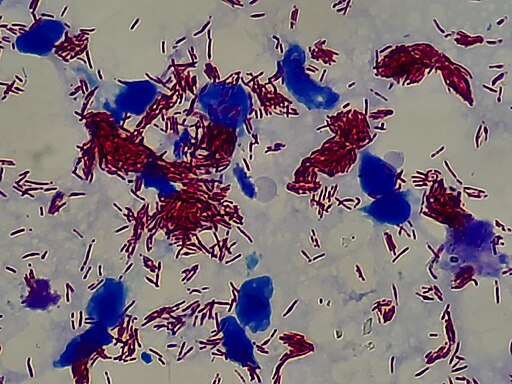Red squirrels – yes, the cute ones with furry ears from children’s books – have become the first identified animal host of one of the oldest diseases in recorded history. It seems these unassuming critters were responsible for spreading leprosy to people in medieval England.
The red squirrel (Sciurus vulgaris) is now a rare sight in the UK, having been largely replaced by their gray cousins, but that wasn’t the case in the Middle Ages. Back then, humans and squirrels rubbed shoulders fairly often – not the best news for the squirrels, mind you, which were prized for their fur and sometimes captured and kept as pets.

The squirrel in this 14th-century depiction looks understandably thrilled to be chained to that birdhouse.
In their own way, though, it seems they fought back, as a new genetic analysis of ancient human and squirrel remains has provided the best proof yet of a theory that squirrels spread leprosy-causing bacteria to medieval humans.
“With our genetic analysis we were able to identify red squirrels as the first ancient animal host of leprosy,” said senior study author Verena Schuenemann, a professor at the University of Basel, in a statement.
Leprosy is caused by strains of bacteria from the species Mycobacterium leprae. Accounts of the disease, which primarily affects the skin and peripheral nervous system, appear in ancient writings across various civilizations, but you may be surprised to learn that the World Health Organization still records over 200,000 new cases every year.
Nowadays, leprosy is treatable with a long course of three antibiotics, but if people are unable to access this treatment the condition can progress to cause permanent disability. And it’s not just the physical effects – leprosy patients have always endured stigma and discrimination, and this continues even though we now understand that it’s much less contagious than our forebears believed.
In the Middle Ages, it was still thought best to isolate those with leprosy from the rest of the population, and one way of doing that was to build special “hospitals” called leprosariums. One such facility was located in Winchester, a small city in the South of England, which also had strong connections to the fur trade. This is where the team sourced the archaeological samples for their analysis.

Rod-shaped M. leprae bacteria at x4,000 magnification.
They studied 25 human and 12 red squirrel samples, identifying, sequencing, and reconstructing the genomes of four strains of M. leprae – including one from a squirrel. Looking more closely at the genomes, the scientists found they all belonged to the same branch of the M. leprae family tree, and that the medieval squirrel strain showed greater similarity to medieval human strains than to modern squirrel strains.
“The medieval red squirrel strain we recovered is more closely related to medieval human strains from the same city than to strains isolated from infected modern red squirrels. Overall, our results point to an independent circulation of M. leprae strains between humans and red squirrels during the Medieval Period,” Schuenemann explained.
This is an important step forward in our understanding of a disease that has been with us for pretty much as long as we have had written records.
“There has been no consideration of the role that animals might have played in the transmission and spread of the disease in the past, and as such, our understanding of leprosy’s history is incomplete until these hosts are considered,” Schuenemann added, noting that looking to potential animal reservoirs will also be important in continuing efforts to control the disease.
Beyond leprosy, spillover events – when diseases jump from animals into humans and become what we call zoonotic – are on people’s minds more than ever these days. It’s widely accepted that COVID-19 started like this, and people are anxiously watching to see if H5N1 avian flu might be heading the same way.
As co-author Sarah Inskip of the University of Leicester said, “Our research shows that there is a long history of zoonotic diseases, and they have had and continue to have a big impact on us.”
The study is published in Current Biology.
Source Link: Ancient DNA Reveals People Caught Leprosy From Adorable Woodland Critters In Medieval England